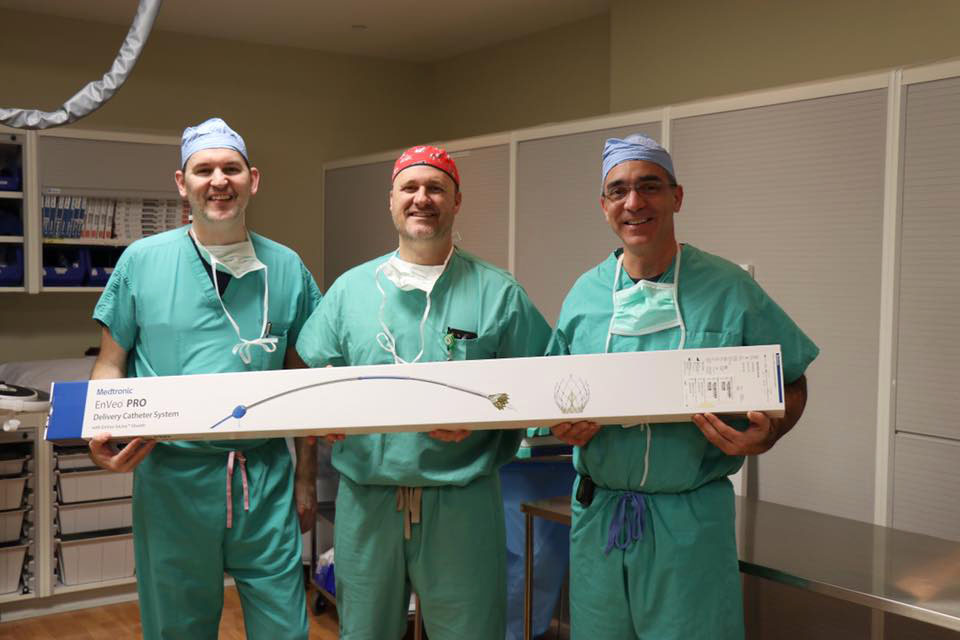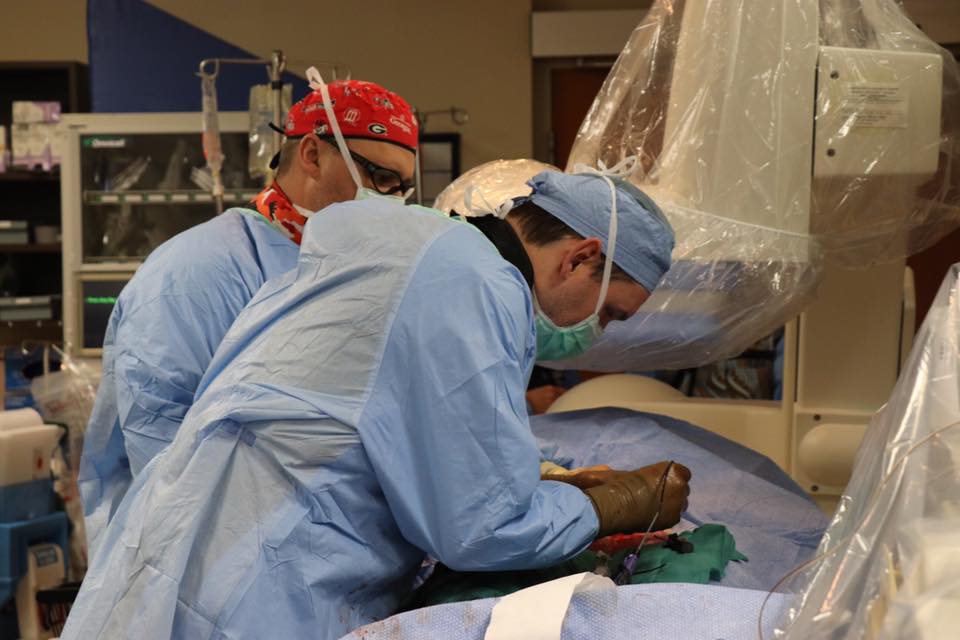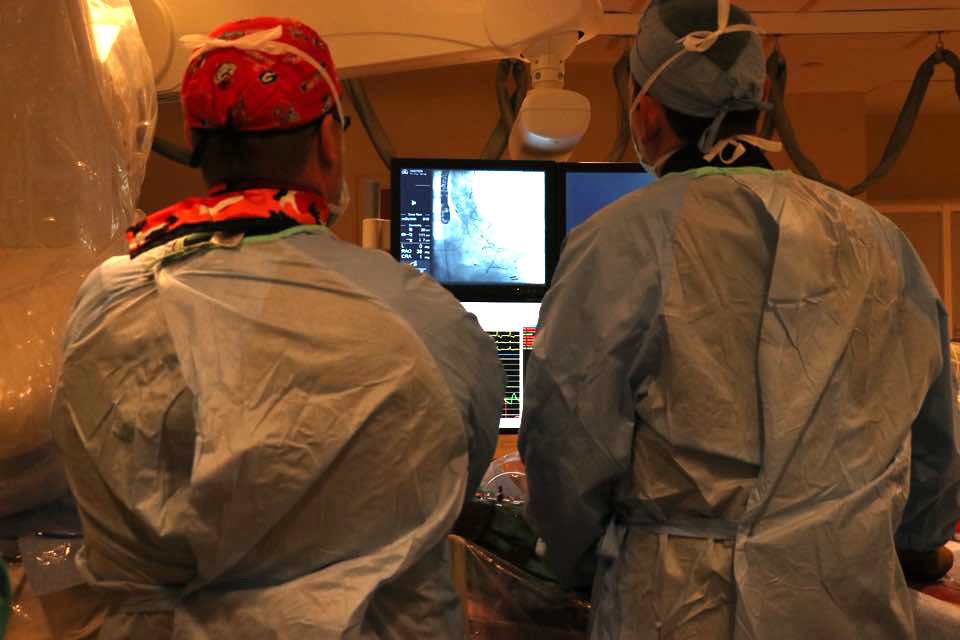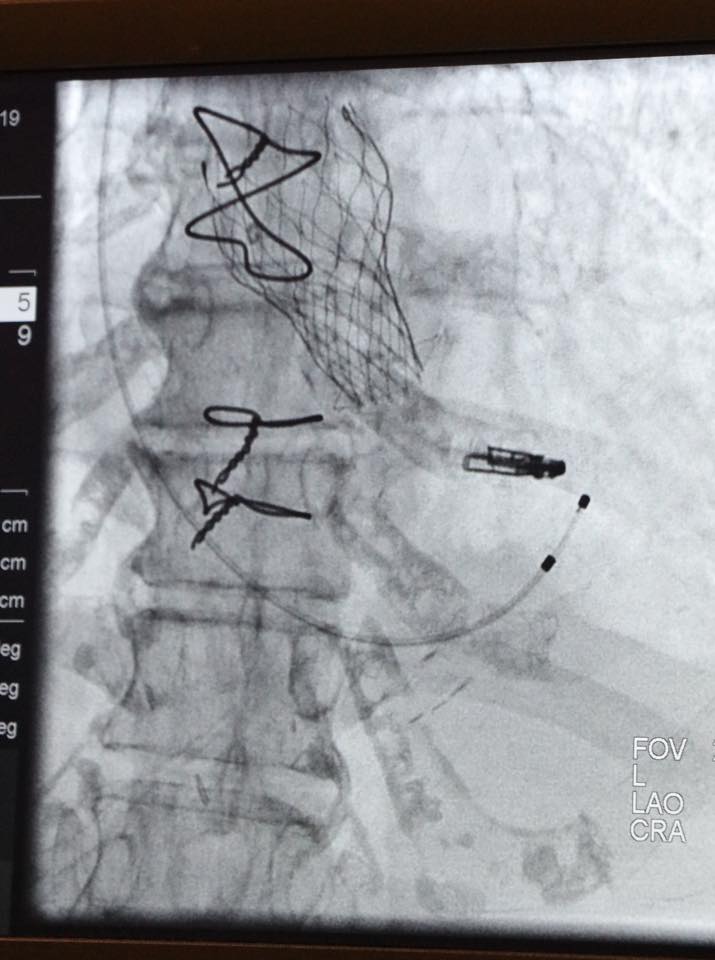Transcatheter Aortic Valve Replacement
TAVR is now considered the standard of care for aortic valve replacement in patients who are too high risk for open heart surgery.
Minimally Invasive Treatment for Aortic Stenosis
TAVR is a breakthrough treatment for severe aortic stenosis. When TAVR’s survival and stroke rates are compared to open-heart aortic valve replacement, TAVR has significantly higher rates of survival and lower rates of stroke for high risk patients.
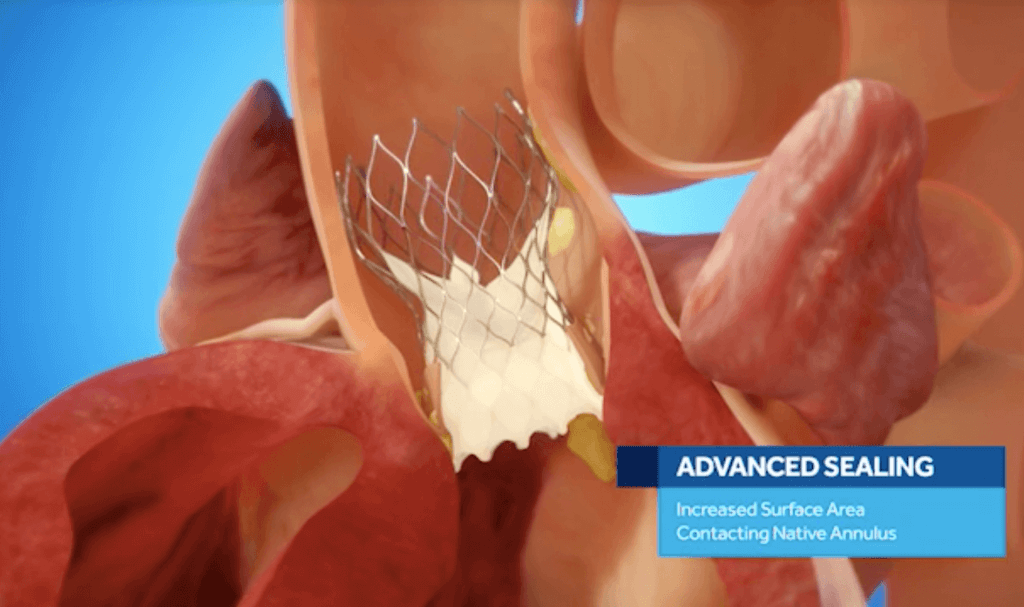
About Severe Aortic Stenosis
Aortic Stenosis is a condition in which the aortic valve narrows, thereby limiting blood flow from the aorta to the rest of the body.
Severe aortic stenosis prevents your aortic valve leaflets from opening and closing properly. This makes your heart work harder to pump blood to the rest of your body. A diseased valve affects your health and limits your daily activities.
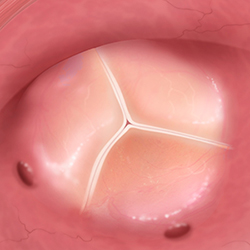 |  with Calcium Deposits |
Treating Severe Aortic Stenosis
Surgical Aortic Valve Replacement (SAVR)
Open heart surgery is done to remove the damaged valve and replace it with an artificial valve. Patients usually need to stay in the hospital for a week or more.
Transcatheter Aortic Valve Replacement (TAVR)
TAVR is less invasive than open heart surgery. Your doctor will make a small incision on your body. After, a thin, flexible tube is inserted into an artery to guide the Medtronic TAVR artificial heart valve up to your heart to replace the diseased valve.
The Medtronic TAVR Heart Valve
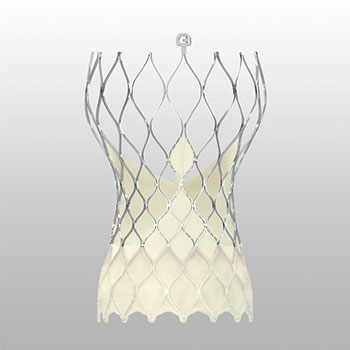
The Medtronic TAVR heart valve is designed to work like your own heart valve.
The metal frame is a blend of nickel and titanium. This material allows the frame to shape itself to your anatomy.
The Evolut PRO+ valve has tissue leaflets and an outer wrap made from pig heart tissue.
About the TAVR Procedure at Singing River Health System
TAVR is a minimally invasive procedure performed at Ocean Springs Hospital by Board Certified Cardiothoracic Surgeons and Cardiologists. The procedure typically takes one to two hours.
Our doctors make a small incision and thread a thin, flexible catheter into your artery. The catheter contains a compressed bioprosthetic heart valve (the Medtronic TAVR Heart Valve). The valve is guided into the aorta and into the diseased valve. The new valve is released from the catheter, opens, and creates a seal. The TAVR valve begins working immediately.
Candidates for TAVR
TAVR is currently approved for:
- Patients with heart disease due to severe aortic stenosis of their native valve.
- Patients with a failing surgical aortic valve who are at high risk or extreme risk for complications during surgery.
TAVR cannot be used for certain people. These include patients who:
- Have an infection
- Cannot take blood-thinning medicines
- Have a reaction to some metals
After Surgery
After your procedure, you may spend a day or more in the ICU (intensive care unit) and another day or two in a patient room. Most patients begin walking within a day of their Medtronic TAVR procedure.
You should start feeling better right away. This is because your heart valve is now working properly. It can take a little longer for others. Many Medtronic TAVR patients report benefits like having more energy, being able to do everyday activities, breathing normally, experiencing less pain, and feeling less anxious.
Ask for TAVR
If you are not healthy enough to have open heart surgery but have severe aortic stenosis or a failing surgical aortic valve, talk to your doctor about having the minimally invasive TAVR procedure at Singing River Health System.
